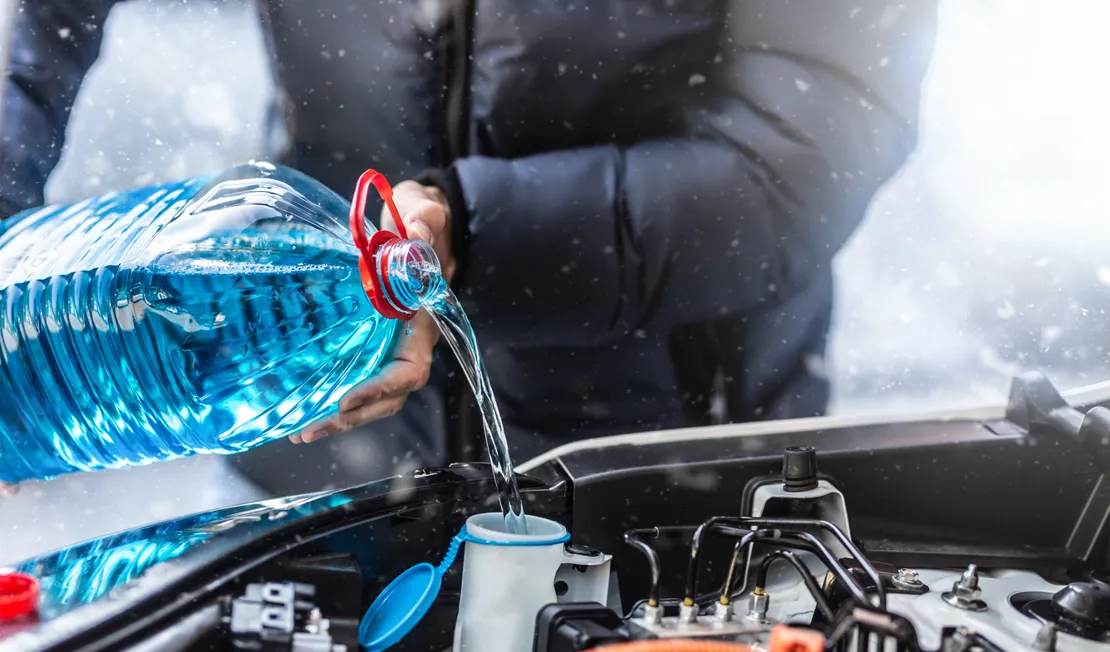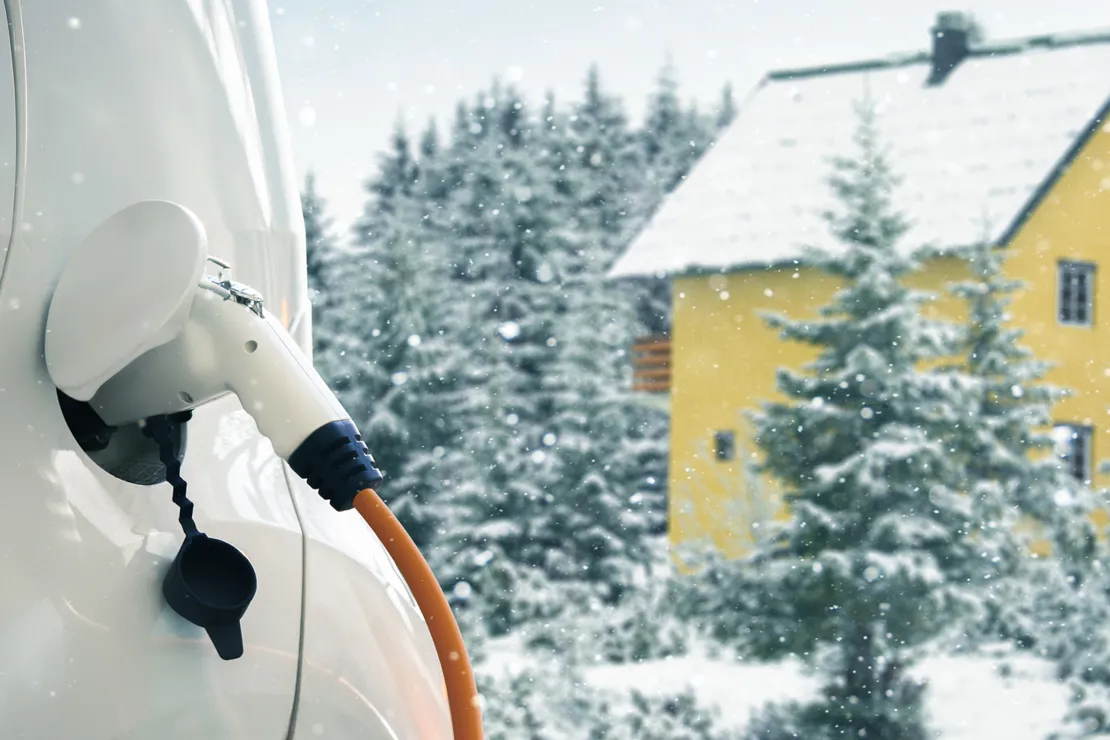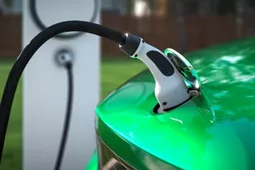Looking after your car over winter
Written by
Luke Simpson is a Business Development Manager at Novuna Vehicle Solutions with many years of experience in the fleet industry.
Monday 16th October 2023

We all know that we need to take extra care of our vehicles during the winter months. Now that the temperature’s dropping, you should make sure your car is running on top form.
Take the time to conduct a few simple checks such as testing your brakes or making sure your battery is working efficiently. This can prevent any unnecessary damage and reduce the risk of breaking down – as well saving you some money too.
Looking to upgrade your vehicle this winter? Take a look at our low-interest car loans
The importance of looking after your car
Not only is a car fault or breakdown immensely stressful and potentially dangerous — it can also be costly. And no one wants an extra bill around Christmastime. Could you afford the average repair cost of £803, whilst potentially factoring in additional costs such as car hire fees or roadside recovery?
Car issues can often be preventable if you look after your vehicle properly as the cold spell approaches, so with a few simple checks you could identify and fix problems that could otherwise end up getting worse and turning into a nightmare before Christmas.
Keep yourself and your loved ones safe and stress-free this festive season by examining your car and spotting any problems early enough to do something about them!
Avoid the most common causes of winter car breakdowns
With cold weather comes an increased breakdown rate across parts of the country. According to AXA, the most common causes of winter breakdowns are:
- Battery problems
- Engine faults
- Cars not starting
- Flat tyres
Luckily, many of these issues are preventable. If you look after your battery over the colder months and regularly check your tyre pressure, for example, you should be able to spot problems before they deteriorate.
Do I need to book a winter service?
You should make sure your car has a full service every year or every 12,000 miles, whichever comes first. So, if your car is due a service in the winter season it’s important to get one booked in!
Many car garages also offer a free winter health check — think of this as a mini service ahead of harsher weather conditions setting in. An expert will check over your tyres, brakes, battery, engine oil, screen wash, wipers, light bulbs and more. Hopefully there’ll be no issues but, if they do spot something, you’ll be able to fix the problem before it puts your safety at risk.
If you prefer to look after your car yourself, it should be easy enough for you to conduct a basic check. However, despite tricky conditions over colder months, a Highways Agency survey found that nearly half of drivers don’t do any checks on their vehicle before the winter season arrives!
If you’re one of the 18% of people who don’t know if their tyres are road legal or not, it’s time to give your car a thorough inspection.

Here’s our handy list of car checks to help you get ready for winter…
1. Check your tyres
Potholes are a particular issue throughout the winter months, when the freezing and thawing of roads causes them to form. There’s also likely to be excess debris on the road after spells of bad weather. Both are top reasons for tyre damage, which is why it’s so important to check your tyres for any signs of wear and tear this winter.
We also recommend taking the time to check the tread depth on all your tyres to make sure they're equipped for gripping potentially icy roads. It’s a legal requirement in the UK for the tread depth to be at least 1.6mm in a continuous band around the central ¾ of the tyre. A simple way of checking is by doing the 20p test. Insert a 20 pence piece into your tread and if your tyre comes above the outer band of the coin, then it’s likely to be above the legal limit.
Don’t forget to test your tyre pressure too. The frequent changes in temperature over winter can cause the rubber to expand and contract, which can cause changes to your tyre pressure. Low pressure will not only shorten the life of the tyre but can also decrease your fuel efficiently, meaning you’ll be spending more cash at the petrol station.
Know what to do if you do find yourself with a flat tyre
It may not always be possible to rely on a back-up wheel in your boot. In fact, recent research by the RAC found that just 3% of new cars sold in the UK come with a spare wheel as standard. You may wish to buy a spare wheel just in case, or invest in an emergency tyre inflator kit to keep in your car as a temporary fix should you experience a flat tyre.
2. Clean your car regularly
As the frosty weather returns, so do gritter trucks. And driving on gritter roads can cause salt corrosion, which is one of the more expensive issues to fix if you don’t take any preventive measures.
When dealing with minor corrosion, give the area a good clean with warm soapy water or white vinegar on an old tea towel. Either one of these two ways will work and help stop the damage spreading.
If the corrosion is more severe, then a trip to your local hardware shop to buy some rust and corrosion remover may be in order. Follow the instructions on the product, and this solution could prevent a costly trip to the mechanic.
3. Clear your windscreen and check your wipers
Having full visibility whilst driving is particularly important in the winter months as it’s generally darker, foggier and frostier.
Ice, dirt and debris can end up on your windscreen so make sure you clean all windows thoroughly before embarking on your journey. You’ll need your wipers in full working order, too, to make sure they can do their job whilst you’re out an about so regularly give your windscreen wipers a once over too.
You might also find your windscreen more prone to little chips in the winter and driving with a cracked windscreen can be dangerous. It’s much quicker and cheaper to sort out a small chip than to wait and let it potentially grow into a bigger problem.
4. Inspect your brakes
Do you notice anything out of the ordinary when you brake such as rattling, squealing, a spongey feeling, or a noticeable increase in stopping distance?
Stopping distances are vastly increased on icy or snowy roads anyway, so worn out or faulty brakes will only amplify them further. Don’t wait to get your brakes inspected by a professional mechanic.
5. Look after your engine
It doesn’t hurt to pop your bonnet and have a look under there occasionally, especially if you haven’t driven your car for a while. There are three main things to check when you take a look under the hood…
- Debris. Get any debris cleared out as soon as you spot it to prevent it clogging up your car and affecting its performance.
- Fluid Levels. You should also check your fluid levels — this includes engine oil, antifreeze, and screen wash — are topped up as required. We recommend choosing ‘ready to use’ screen wash specifically formulated for cold months to keep your windscreen clean and free from frost.
- Dry Cylinders. If your car hasn’t been driven in a while, there’s a chance that oil may have dripped down to the bottom of the drain pan, leaving your cylinders dry. An easy fix for this is to ‘fog the engine’. This basically means using a specially formulated spray containing petroleum that will keep your engine lubricated and prevent corrosion. The best way to do this is to start the engine, remove the air filter and spray into the air intake of each cylinder. Once you have done this, leave the engine on for a further ten seconds and turn it off. Finally, remove the spark plugs and spray your fog oil into each cylinder before replacing them.
6. Check your battery
Your battery is much more likely to go flat in the cold weather as you’ll no doubt be using your heater and lights much more often in the winter months.
Plus, when the weather outside is frightful, many of us opt to stay nice and warm indoors — thus leaving our cars on the driveway for longer periods of time which can cause the car battery to lose its charge. Make sure you keep taking your car on short trips through the festive season to keep its battery charged up.
If you find your car slow to start as the temperature drops, your battery is likely on its way out and it should be checked out by your local garage.
7. Keep an eye on your lights
Most modern cars will alert you of any light bulb failure but, if you do spot a warning light, make sure you act straightaway as driving without functioning headlights is illegal.
Our top tip is to regularly clean your lights, too. Dirt can easily build up over the winter months and could affect your visibility.
8. Pack an emergency kit
Once your car’s checked and prepped for the winter, pack up the essentials so you’ll have them to hand should the worst happen.
It’s always a good idea to have an emergency kit in the boot. Emergency items should include spare headlight bulbs, a set of jump leads, a torch (plus batteries), a decent tow strap/bar, a high-vis vest, warm clothes, spare phone charger, chocolate or sugary snacks and bottled water.
If you live or travel through an area regularly known for severe snowfall, make sure to carry wooden planks, a shovel, and some old carpet. These can all help get a stranded car moving.
Finally, if you’re planning a long trip, don’t forget to pack a small selection of tools and spares just in case - like a bottle of coolant, oil and an ancillary belt. You’ll never know when they could come in handy.
For even more hints and tips to keep you safe despite the frosty mornings, download these winter driving tips guide from Novuna Vehicle Solutions.
How to get your EV prepared for winter
You should conduct regular maintenance checks on your EV as you would a petrol or diesel car.
There are also a few other things to be aware of. Temperature, for example, can impact the performance of EV batteries and charging speeds. Tests suggest all-electric vehicles can drive around 15% fewer miles in the winter compared to summer months.
Be aware that EVs might take a little longer to charge through the winter months and plan this into your journey. Keep the vehicle plugged in when not in use, don’t set off if your battery is lower than 20% and have an idea of which public charging points are along your route if you’re planning a long trip. It’s also recommended to keep your EV in a garage overnight if you can, as keeping the car warm could positively impact battery performance.
There are dozens of benefits to driving an electric car throughout the winter months. Features of some models include prewarming, eco mode and regenerative braking that minimises skidding. Our experts have all the answers if you’re considering getting an EV but need to know more.

Is it time for a car upgrade?
Though many choose to buy a new vehicle just before the warranty runs out, which is normally after three years, the average length of time people keep a brand-new car for is around six years. If you have a used car, though, it’s time to upgrade if your repair bills are costing you more each year than your car payments.
Should I buy a new car in winter?
December and January are thought to be quieter periods, as the festive rush puts the brakes on people shopping around for their new wheels. Of course, car dealers still have targets to meet and might be open to offering you a better deal if you shop around in winter. Don’t forget that the festive season is known for spectacular sales, so keep an eye on any Boxing Day or New Year offers too.
It’s understandable you might want to see your car through Christmas and upgrade in the New Year though, in which case it’s best to wait until spring is just around the corner. As new number plates are released every March and September, many people swap their old cars for brand-new ones then. You could get yourself a great deal on a used car in March or April if the dealer has an influx of them in stock.
If you’re after a new car yourself, you could try to miss the rush for new plates by shopping in February. Car dealers will be more likely to negotiate with you if there’s a lack of other new car buyers out there who are waiting for the new plate to be released. Take a look at our guide on the best time to buy a car for more information.
Negotiate a great price by paying in cash
Car dealers can make money from you taking finance so you’ll be able to negotiate the best deal by keeping your cards close to your chest and telling them you’re considering all your options. Once you’ve found the lowest price, tell them you want to pay in cash. They’re likely to honour the price and you’ll be able to walk away with a great deal.
We understand you might not have the cash ready and waiting to spend, which is where using a personal loan to buy a car comes in.
For more top money-saving tips when buying a new car, head to our guide.
Drive away in a brand-new motor with a low-cost car loan from Novuna Personal Finance
We can help put you in the driving seat faster than you think! If you need a new car, get into gear this winter by taking out a low-cost car loan with us. Borrow between £1,000 and £35,000 with competitive rates from as low as 7.4% APR Representative (£7,500-£25,000) and take on the cold season in a stylish new motor.




